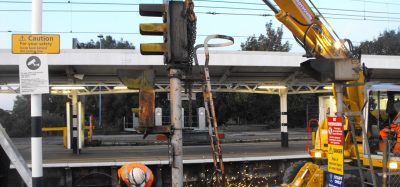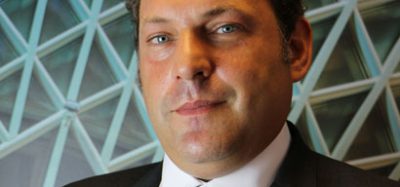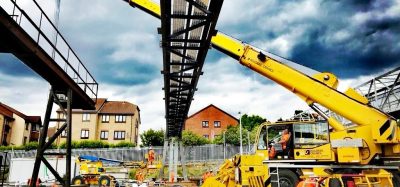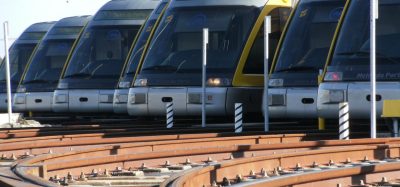Maximising the benefits of re-signalling the Danish railway network
Posted: 31 May 2011 | | No comments yet
The Danish parliament Manager, Engineering Team of the Signalling Programme, Banedanmark has decided to fund a €3.2 billion replacement programme of renewing all Danish railway signalling before 2021. The programme is unique in Europe both in size and in its approach of focusing on economies of scale and creating a competitive market situation to ensure the best possible price and quality.
The programme also introduces a step change in technology which maximises the possibilities and benefits of re-signalling the Danish railway network. Customer benefits from the programme include higher reliability, higher line speed at selected lines and homogenous high safety across the country.
The Danish parliament Manager, Engineering Team of the Signalling Programme, Banedanmark has decided to fund a €3.2 billion replacement programme of renewing all Danish railway signalling before 2021. The programme is unique in Europe both in size and in its approach of focusing on economies of scale and creating a competitive market situation to ensure the best possible price and quality. The programme also introduces a step change in technology which maximises the possibilities and benefits of re-signalling the Danish railway network. Customer benefits from the programme include higher reliability, higher line speed at selected lines and homogenous high safety across the country.
The Danish parliament Manager, Engineering Team of the Signalling Programme, Banedanmark has decided to fund a €3.2 billion replacement programme of renewing all Danish railway signalling before 2021. The programme is unique in Europe both in size and in its approach of focusing on economies of scale and creating a competitive market situation to ensure the best possible price and quality.
The programme also introduces a step change in technology which maximises the possibilities and benefits of re-signalling the Danish railway network. Customer benefits from the programme include higher reliability, higher line speed at selected lines and homogenous high safety across the country.
Banedanmark’s signalling systems are aging to a point, where large parts of it have overrun their technical service life. Banedanmark conducted a strategic analysis demonstrating that a total renewal strategy would be the best economical and technical way of renewing the signalling systems.
The Banedanmark network includes 2,100km of lines and 3,200km of tracks. It serves close to 2,700 trains a day – 1,100 of those on the city lines in Copenhagen (S-train).
Age
About half of the signalling systems in use today are more than 50 years old. Nearly 80% are based on relay technology from the 1950s-60s and some even on pre World War 1 technology.
The concept of a total renewal
The idea of total renewal of all signalling equipment was conceived as a response to a number of urgent infrastructure management constraints, including:
- The high and increasing average age of Banedanmark’s signalling assets
- Lacking competition in the Danish market due to unique national rules, limited market and the associated monopolistic market situation
- High maintenance costs, safety approval, implementation of changes and spare parts
- Difficulties in the supply chain for spare parts
- Lacking expertise in the old technologies as staff is pensioned
- Lack of functionality and potential development of the railway.
Key elements in the strategy
All conventional network signalling equipment is replaced with ERTMS level 2 based cab signalling.
Likewise, all signalling on the Copenhagen S-train network is replaced with a CBTC (Communication Based Train Control) metro/urban railway signalling system, prepared for driverless operation.
Key elements in the strategy include:
- Total renewal means total replacement. All existing equipment is replaced no matter the age or technology.
- To use European railway and industrial standards where possible. The ERTMS (European Railway Traffic Management System) part will be based on ERTMS baseline 3 and aligned with the European work on technical and operational harmonisation.
- Development of a complete new set of operational rules for the conventional network according to European specifications TSI-OPE (Technical Specification for Interoperability Operations)
- Also, to develop a new set of operational rules for the S-bane network, e.g. by adopting an existing and proven set of rules from other metro/urban railway systems.
- Realising that currently no international signalling or interlocking standard exists, lower unit prices are best obtained by tendering out the replacement of all signalling on the conventional network in two major contracts, one framework contract for on-board equipment and the S-train network as one contract. It has been decided to tender out the replacement on the infrastructure network in two contracts as it was assessed that one contract would become too large for one supplier to handle successfully.
- The total replacement strategy has additional advantages:
- Competition between all major signalling players as all requirements are new and high level.
- Equipment and interface problems between components will be minimised as two suppliers deliver full signalling packages (which are compatible), the benefit of having only one safety approval per contract and design & development costs will represent a low proportion of the investment.
- By a well planned but swift roll-out, a number of benefits will be obtained, including:
- Minimising the disruption during implementation
- Obtaining a beneficial learning curve by repetitive similar installations
- Quicker ‘pay-back’ in terms of benefits.
- Procuring a few major contracts will be combined with a performance type contract where the supplier delivers technical operation and maintenance for a number of years governed by a set of performance indicators. The performance type contracts are considered a means to secure the efficient delivery of the new system as well as a cheaper and more efficient maintenance regime.
Benefits
The total renewal approach results in more benefits for the passengers than a similar investment in a successive age based replacement.
- A reduction of 80% of all signalling related delays on the mainline system and 50% on the S-bane will be achieved with the implementation of the new system
- Higher train speeds and shorter travel times on some lines
- A homogeneous high safety level on the whole network
- ERTMS will offer full interoperability according to European standards. (Denmark is a part of the European Corridor B cooperation)
- Better traffic information to passengers.
Realisation of the expected benefit from renewal of the signalling system depends heavily on a successful achievement and anchoring of the changes in the organisation of Banedanmark, which the Signalling Programme is very much aware of.
The total renewal strategy will implement the newest proven signalling technology, based on standard industrial hardware components, redundant system configurations offering uniform system interfaces and high reliability. Furthermore, it gives the opportunity to implement full interoperability on the Danish conventional network and to integrate the automatic traffic management in a few centres for the whole country.
Implementation in the Banedanmark organisation
Realisation of the expected benefit from the Signalling Programme depends heavily on a successful implementation of the new signalling systems in the organisation of Banedanmark. The complete renewal will bring major changes in Banedanmark. The changes have various forms and include new working processes, organisational structures, physical frames, the need for new competencies and skills, etc.
A department for Organisation Imple – mentation has been created within the programme. The goal is to ensure that the organisation is prepared and that the transition runs smoothly in order to bring the new signalling systems into beneficial operation. This is done through close cooperation between the programme and the line organisation on a number of issues such as training in future needed competencies and skills, retention, leadership, communication, etc.
For further information, please see http://uk.bane.dk
About the Author
Claus Nymark is the Manager of the Engineering Team of the Signalling Programme at Banedanmark. A Mechanical Engineer at the Aarhus School of Engineering, Claus’ past experience has included Technical Leader and Senior Mechanical Engineer at Nokia Mobile Phones, Manufacturing Engineer and Mechanical Engineer at GN Netcom as wells as a visiting Lecturer at Copenhagen University College of Engineering.







